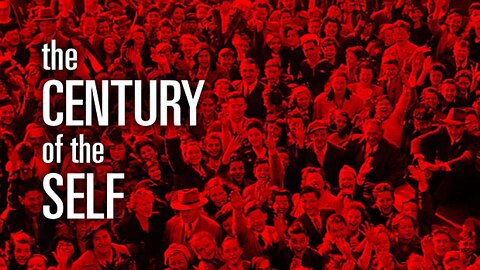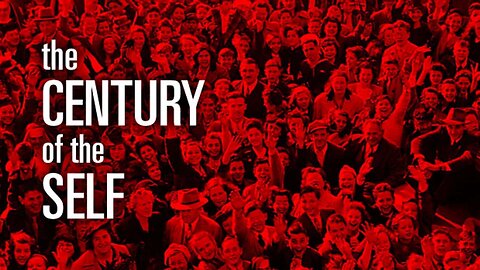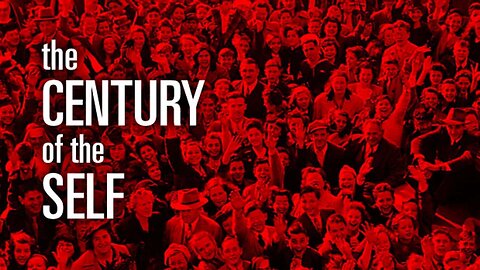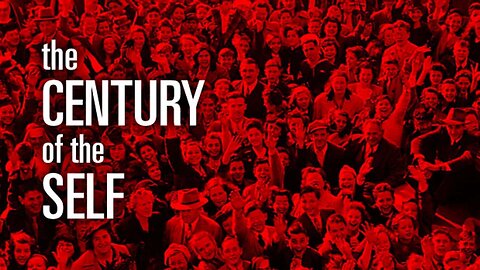
Adam Curtis | The Century of the Self | (2002)
4 videos
Updated 10 months ago
The Century of the Self presents a thought-provoking analysis of how Sigmund Freud’s theories on human psychology have been utilized by those in power to shape and control mass society. This four-part series by filmmaker Adam Curtis traces the impact of Freud’s ideas on politics, business, and culture throughout the 20th century.
The documentary begins by introducing Edward Bernays, Freud’s nephew, who applied psychoanalytic concepts to the field of public relations in the 1920s. Bernays pioneered techniques to manipulate public opinion, famously convincing American women to start smoking by associating cigarettes with female empowerment. His methods laid the groundwork for modern advertising and political campaigning, demonstrating how unconscious desires could be harnessed to influence behavior on a mass scale.
As the series progresses, it examines how governments and corporations increasingly adopted these psychological tactics in the post-World War II era. It argues that leaders came to view the public as inherently irrational and potentially dangerous, necessitating subtle forms of control to maintain social order. This perspective led to the rise of focus groups, lifestyle marketing, and other techniques designed to tap into people’s innermost feelings and desires.
The third part of the series focuses on the cultural shifts of the 1960s and 1970s, when a new emphasis on individual self-expression challenged traditional notions of social conformity. Paradoxically, this celebration of the self was quickly co-opted by businesses, who reframed consumerism as a means of personal fulfillment and identity creation. It suggests that this transformation fundamentally altered the relationship between citizens and institutions, with profound implications for democracy and social cohesion.
The final episode examines how these psychological techniques have been applied to modern politics, particularly in the 1990s. It details how political parties in the United States and United Kingdom used focus groups and other tools to shape their messaging and policies around voters’ emotional responses. This approach, it argues, has led to a political landscape increasingly driven by appealing to individual desires rather than addressing broader societal needs.
Throughout the series, Curtis weaves together archival footage, interviews, and narration to construct a narrative spanning nearly a century of social and political history. The documentary raises challenging questions about the nature of freedom, democracy, and human behavior in an age of mass media and sophisticated psychological manipulation. By tracing the evolution and application of Freud’s theories, The Century of the Self offers a unique perspective on the forces that have shaped modern society and politics.
-
The Century of the Self | Adam Curtis | (2002) | 1. Happiness Machines (see description for playlist)
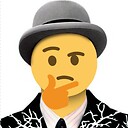 ChaunceysGardenfull playlist: Adam Curtis | The Century of the Self | (2002) https://rumble.com/playlists/B71xYg9VcMs other Adam Curtis playlists: The Century of the Self | (2002) https://rumble.com/playlists/B71xYg9VcMs The Power of Nightmares | (2004) https://rumble.com/playlists/AcND0AIdwxw The Mayfair Set | (1999) https://rumble.com/playlists/TY6kr3k8rZA Miscellaneous https://rumble.com/playlists/H5NqdFg4G4U The Trap | (2007) https://rumble.com/playlists/F9hYmAMJPNM Russia 1985-1999 TraumaZone | (2022) https://rumble.com/playlists/I12Kd8gTf8A All Watched Over by Machines of Loving Grace | (2011) https://rumble.com/playlists/UEeqeUNA5tM Can't Get You Out Of My Head | (2021) https://rumble.com/playlists/dfM0eugWsFI The Century of the Self presents a thought-provoking analysis of how Sigmund Freud’s theories on human psychology have been utilized by those in power to shape and control mass society. This four-part series by filmmaker Adam Curtis traces the impact of Freud’s ideas on politics, business, and culture throughout the 20th century. The documentary begins by introducing Edward Bernays, Freud’s nephew, who applied psychoanalytic concepts to the field of public relations in the 1920s. Bernays pioneered techniques to manipulate public opinion, famously convincing American women to start smoking by associating cigarettes with female empowerment. His methods laid the groundwork for modern advertising and political campaigning, demonstrating how unconscious desires could be harnessed to influence behavior on a mass scale. As the series progresses, it examines how governments and corporations increasingly adopted these psychological tactics in the post-World War II era. It argues that leaders came to view the public as inherently irrational and potentially dangerous, necessitating subtle forms of control to maintain social order. This perspective led to the rise of focus groups, lifestyle marketing, and other techniques designed to tap into people’s innermost feelings and desires. The third part of the series focuses on the cultural shifts of the 1960s and 1970s, when a new emphasis on individual self-expression challenged traditional notions of social conformity. Paradoxically, this celebration of the self was quickly co-opted by businesses, who reframed consumerism as a means of personal fulfillment and identity creation. It suggests that this transformation fundamentally altered the relationship between citizens and institutions, with profound implications for democracy and social cohesion. The final episode examines how these psychological techniques have been applied to modern politics, particularly in the 1990s. It details how political parties in the United States and United Kingdom used focus groups and other tools to shape their messaging and policies around voters’ emotional responses. This approach, it argues, has led to a political landscape increasingly driven by appealing to individual desires rather than addressing broader societal needs. Throughout the series, Curtis weaves together archival footage, interviews, and narration to construct a narrative spanning nearly a century of social and political history. The documentary raises challenging questions about the nature of freedom, democracy, and human behavior in an age of mass media and sophisticated psychological manipulation. By tracing the evolution and application of Freud’s theories, The Century of the Self offers a unique perspective on the forces that have shaped modern society and politics.346 views
ChaunceysGardenfull playlist: Adam Curtis | The Century of the Self | (2002) https://rumble.com/playlists/B71xYg9VcMs other Adam Curtis playlists: The Century of the Self | (2002) https://rumble.com/playlists/B71xYg9VcMs The Power of Nightmares | (2004) https://rumble.com/playlists/AcND0AIdwxw The Mayfair Set | (1999) https://rumble.com/playlists/TY6kr3k8rZA Miscellaneous https://rumble.com/playlists/H5NqdFg4G4U The Trap | (2007) https://rumble.com/playlists/F9hYmAMJPNM Russia 1985-1999 TraumaZone | (2022) https://rumble.com/playlists/I12Kd8gTf8A All Watched Over by Machines of Loving Grace | (2011) https://rumble.com/playlists/UEeqeUNA5tM Can't Get You Out Of My Head | (2021) https://rumble.com/playlists/dfM0eugWsFI The Century of the Self presents a thought-provoking analysis of how Sigmund Freud’s theories on human psychology have been utilized by those in power to shape and control mass society. This four-part series by filmmaker Adam Curtis traces the impact of Freud’s ideas on politics, business, and culture throughout the 20th century. The documentary begins by introducing Edward Bernays, Freud’s nephew, who applied psychoanalytic concepts to the field of public relations in the 1920s. Bernays pioneered techniques to manipulate public opinion, famously convincing American women to start smoking by associating cigarettes with female empowerment. His methods laid the groundwork for modern advertising and political campaigning, demonstrating how unconscious desires could be harnessed to influence behavior on a mass scale. As the series progresses, it examines how governments and corporations increasingly adopted these psychological tactics in the post-World War II era. It argues that leaders came to view the public as inherently irrational and potentially dangerous, necessitating subtle forms of control to maintain social order. This perspective led to the rise of focus groups, lifestyle marketing, and other techniques designed to tap into people’s innermost feelings and desires. The third part of the series focuses on the cultural shifts of the 1960s and 1970s, when a new emphasis on individual self-expression challenged traditional notions of social conformity. Paradoxically, this celebration of the self was quickly co-opted by businesses, who reframed consumerism as a means of personal fulfillment and identity creation. It suggests that this transformation fundamentally altered the relationship between citizens and institutions, with profound implications for democracy and social cohesion. The final episode examines how these psychological techniques have been applied to modern politics, particularly in the 1990s. It details how political parties in the United States and United Kingdom used focus groups and other tools to shape their messaging and policies around voters’ emotional responses. This approach, it argues, has led to a political landscape increasingly driven by appealing to individual desires rather than addressing broader societal needs. Throughout the series, Curtis weaves together archival footage, interviews, and narration to construct a narrative spanning nearly a century of social and political history. The documentary raises challenging questions about the nature of freedom, democracy, and human behavior in an age of mass media and sophisticated psychological manipulation. By tracing the evolution and application of Freud’s theories, The Century of the Self offers a unique perspective on the forces that have shaped modern society and politics.346 views -
The Century of the Self | Adam Curtis | (2002) | 2. The Engineering of Consent
 ChaunceysGardenThe Century of the Self presents a thought-provoking analysis of how Sigmund Freud’s theories on human psychology have been utilized by those in power to shape and control mass society. This four-part series by filmmaker Adam Curtis traces the impact of Freud’s ideas on politics, business, and culture throughout the 20th century. The documentary begins by introducing Edward Bernays, Freud’s nephew, who applied psychoanalytic concepts to the field of public relations in the 1920s. Bernays pioneered techniques to manipulate public opinion, famously convincing American women to start smoking by associating cigarettes with female empowerment. His methods laid the groundwork for modern advertising and political campaigning, demonstrating how unconscious desires could be harnessed to influence behavior on a mass scale. As the series progresses, it examines how governments and corporations increasingly adopted these psychological tactics in the post-World War II era. It argues that leaders came to view the public as inherently irrational and potentially dangerous, necessitating subtle forms of control to maintain social order. This perspective led to the rise of focus groups, lifestyle marketing, and other techniques designed to tap into people’s innermost feelings and desires. The third part of the series focuses on the cultural shifts of the 1960s and 1970s, when a new emphasis on individual self-expression challenged traditional notions of social conformity. Paradoxically, this celebration of the self was quickly co-opted by businesses, who reframed consumerism as a means of personal fulfillment and identity creation. It suggests that this transformation fundamentally altered the relationship between citizens and institutions, with profound implications for democracy and social cohesion. The final episode examines how these psychological techniques have been applied to modern politics, particularly in the 1990s. It details how political parties in the United States and United Kingdom used focus groups and other tools to shape their messaging and policies around voters’ emotional responses. This approach, it argues, has led to a political landscape increasingly driven by appealing to individual desires rather than addressing broader societal needs. Throughout the series, Curtis weaves together archival footage, interviews, and narration to construct a narrative spanning nearly a century of social and political history. The documentary raises challenging questions about the nature of freedom, democracy, and human behavior in an age of mass media and sophisticated psychological manipulation. By tracing the evolution and application of Freud’s theories, The Century of the Self offers a unique perspective on the forces that have shaped modern society and politics.10 views
ChaunceysGardenThe Century of the Self presents a thought-provoking analysis of how Sigmund Freud’s theories on human psychology have been utilized by those in power to shape and control mass society. This four-part series by filmmaker Adam Curtis traces the impact of Freud’s ideas on politics, business, and culture throughout the 20th century. The documentary begins by introducing Edward Bernays, Freud’s nephew, who applied psychoanalytic concepts to the field of public relations in the 1920s. Bernays pioneered techniques to manipulate public opinion, famously convincing American women to start smoking by associating cigarettes with female empowerment. His methods laid the groundwork for modern advertising and political campaigning, demonstrating how unconscious desires could be harnessed to influence behavior on a mass scale. As the series progresses, it examines how governments and corporations increasingly adopted these psychological tactics in the post-World War II era. It argues that leaders came to view the public as inherently irrational and potentially dangerous, necessitating subtle forms of control to maintain social order. This perspective led to the rise of focus groups, lifestyle marketing, and other techniques designed to tap into people’s innermost feelings and desires. The third part of the series focuses on the cultural shifts of the 1960s and 1970s, when a new emphasis on individual self-expression challenged traditional notions of social conformity. Paradoxically, this celebration of the self was quickly co-opted by businesses, who reframed consumerism as a means of personal fulfillment and identity creation. It suggests that this transformation fundamentally altered the relationship between citizens and institutions, with profound implications for democracy and social cohesion. The final episode examines how these psychological techniques have been applied to modern politics, particularly in the 1990s. It details how political parties in the United States and United Kingdom used focus groups and other tools to shape their messaging and policies around voters’ emotional responses. This approach, it argues, has led to a political landscape increasingly driven by appealing to individual desires rather than addressing broader societal needs. Throughout the series, Curtis weaves together archival footage, interviews, and narration to construct a narrative spanning nearly a century of social and political history. The documentary raises challenging questions about the nature of freedom, democracy, and human behavior in an age of mass media and sophisticated psychological manipulation. By tracing the evolution and application of Freud’s theories, The Century of the Self offers a unique perspective on the forces that have shaped modern society and politics.10 views -
The Century of the Self | Adam Curtis | (2002) | 3. There is a Policeman Inside
 ChaunceysGardenThe Century of the Self presents a thought-provoking analysis of how Sigmund Freud’s theories on human psychology have been utilized by those in power to shape and control mass society. This four-part series by filmmaker Adam Curtis traces the impact of Freud’s ideas on politics, business, and culture throughout the 20th century. The documentary begins by introducing Edward Bernays, Freud’s nephew, who applied psychoanalytic concepts to the field of public relations in the 1920s. Bernays pioneered techniques to manipulate public opinion, famously convincing American women to start smoking by associating cigarettes with female empowerment. His methods laid the groundwork for modern advertising and political campaigning, demonstrating how unconscious desires could be harnessed to influence behavior on a mass scale. As the series progresses, it examines how governments and corporations increasingly adopted these psychological tactics in the post-World War II era. It argues that leaders came to view the public as inherently irrational and potentially dangerous, necessitating subtle forms of control to maintain social order. This perspective led to the rise of focus groups, lifestyle marketing, and other techniques designed to tap into people’s innermost feelings and desires. The third part of the series focuses on the cultural shifts of the 1960s and 1970s, when a new emphasis on individual self-expression challenged traditional notions of social conformity. Paradoxically, this celebration of the self was quickly co-opted by businesses, who reframed consumerism as a means of personal fulfillment and identity creation. It suggests that this transformation fundamentally altered the relationship between citizens and institutions, with profound implications for democracy and social cohesion. The final episode examines how these psychological techniques have been applied to modern politics, particularly in the 1990s. It details how political parties in the United States and United Kingdom used focus groups and other tools to shape their messaging and policies around voters’ emotional responses. This approach, it argues, has led to a political landscape increasingly driven by appealing to individual desires rather than addressing broader societal needs. Throughout the series, Curtis weaves together archival footage, interviews, and narration to construct a narrative spanning nearly a century of social and political history. The documentary raises challenging questions about the nature of freedom, democracy, and human behavior in an age of mass media and sophisticated psychological manipulation. By tracing the evolution and application of Freud’s theories, The Century of the Self offers a unique perspective on the forces that have shaped modern society and politics.2 views
ChaunceysGardenThe Century of the Self presents a thought-provoking analysis of how Sigmund Freud’s theories on human psychology have been utilized by those in power to shape and control mass society. This four-part series by filmmaker Adam Curtis traces the impact of Freud’s ideas on politics, business, and culture throughout the 20th century. The documentary begins by introducing Edward Bernays, Freud’s nephew, who applied psychoanalytic concepts to the field of public relations in the 1920s. Bernays pioneered techniques to manipulate public opinion, famously convincing American women to start smoking by associating cigarettes with female empowerment. His methods laid the groundwork for modern advertising and political campaigning, demonstrating how unconscious desires could be harnessed to influence behavior on a mass scale. As the series progresses, it examines how governments and corporations increasingly adopted these psychological tactics in the post-World War II era. It argues that leaders came to view the public as inherently irrational and potentially dangerous, necessitating subtle forms of control to maintain social order. This perspective led to the rise of focus groups, lifestyle marketing, and other techniques designed to tap into people’s innermost feelings and desires. The third part of the series focuses on the cultural shifts of the 1960s and 1970s, when a new emphasis on individual self-expression challenged traditional notions of social conformity. Paradoxically, this celebration of the self was quickly co-opted by businesses, who reframed consumerism as a means of personal fulfillment and identity creation. It suggests that this transformation fundamentally altered the relationship between citizens and institutions, with profound implications for democracy and social cohesion. The final episode examines how these psychological techniques have been applied to modern politics, particularly in the 1990s. It details how political parties in the United States and United Kingdom used focus groups and other tools to shape their messaging and policies around voters’ emotional responses. This approach, it argues, has led to a political landscape increasingly driven by appealing to individual desires rather than addressing broader societal needs. Throughout the series, Curtis weaves together archival footage, interviews, and narration to construct a narrative spanning nearly a century of social and political history. The documentary raises challenging questions about the nature of freedom, democracy, and human behavior in an age of mass media and sophisticated psychological manipulation. By tracing the evolution and application of Freud’s theories, The Century of the Self offers a unique perspective on the forces that have shaped modern society and politics.2 views -
The Century of the Self | Adam Curtis | (2002) | 4. Eight People Sipping Wine
 ChaunceysGardenThe Century of the Self presents a thought-provoking analysis of how Sigmund Freud’s theories on human psychology have been utilized by those in power to shape and control mass society. This four-part series by filmmaker Adam Curtis traces the impact of Freud’s ideas on politics, business, and culture throughout the 20th century. The documentary begins by introducing Edward Bernays, Freud’s nephew, who applied psychoanalytic concepts to the field of public relations in the 1920s. Bernays pioneered techniques to manipulate public opinion, famously convincing American women to start smoking by associating cigarettes with female empowerment. His methods laid the groundwork for modern advertising and political campaigning, demonstrating how unconscious desires could be harnessed to influence behavior on a mass scale. As the series progresses, it examines how governments and corporations increasingly adopted these psychological tactics in the post-World War II era. It argues that leaders came to view the public as inherently irrational and potentially dangerous, necessitating subtle forms of control to maintain social order. This perspective led to the rise of focus groups, lifestyle marketing, and other techniques designed to tap into people’s innermost feelings and desires. The third part of the series focuses on the cultural shifts of the 1960s and 1970s, when a new emphasis on individual self-expression challenged traditional notions of social conformity. Paradoxically, this celebration of the self was quickly co-opted by businesses, who reframed consumerism as a means of personal fulfillment and identity creation. It suggests that this transformation fundamentally altered the relationship between citizens and institutions, with profound implications for democracy and social cohesion. The final episode examines how these psychological techniques have been applied to modern politics, particularly in the 1990s. It details how political parties in the United States and United Kingdom used focus groups and other tools to shape their messaging and policies around voters’ emotional responses. This approach, it argues, has led to a political landscape increasingly driven by appealing to individual desires rather than addressing broader societal needs. Throughout the series, Curtis weaves together archival footage, interviews, and narration to construct a narrative spanning nearly a century of social and political history. The documentary raises challenging questions about the nature of freedom, democracy, and human behavior in an age of mass media and sophisticated psychological manipulation. By tracing the evolution and application of Freud’s theories, The Century of the Self offers a unique perspective on the forces that have shaped modern society and politics.1 view
ChaunceysGardenThe Century of the Self presents a thought-provoking analysis of how Sigmund Freud’s theories on human psychology have been utilized by those in power to shape and control mass society. This four-part series by filmmaker Adam Curtis traces the impact of Freud’s ideas on politics, business, and culture throughout the 20th century. The documentary begins by introducing Edward Bernays, Freud’s nephew, who applied psychoanalytic concepts to the field of public relations in the 1920s. Bernays pioneered techniques to manipulate public opinion, famously convincing American women to start smoking by associating cigarettes with female empowerment. His methods laid the groundwork for modern advertising and political campaigning, demonstrating how unconscious desires could be harnessed to influence behavior on a mass scale. As the series progresses, it examines how governments and corporations increasingly adopted these psychological tactics in the post-World War II era. It argues that leaders came to view the public as inherently irrational and potentially dangerous, necessitating subtle forms of control to maintain social order. This perspective led to the rise of focus groups, lifestyle marketing, and other techniques designed to tap into people’s innermost feelings and desires. The third part of the series focuses on the cultural shifts of the 1960s and 1970s, when a new emphasis on individual self-expression challenged traditional notions of social conformity. Paradoxically, this celebration of the self was quickly co-opted by businesses, who reframed consumerism as a means of personal fulfillment and identity creation. It suggests that this transformation fundamentally altered the relationship between citizens and institutions, with profound implications for democracy and social cohesion. The final episode examines how these psychological techniques have been applied to modern politics, particularly in the 1990s. It details how political parties in the United States and United Kingdom used focus groups and other tools to shape their messaging and policies around voters’ emotional responses. This approach, it argues, has led to a political landscape increasingly driven by appealing to individual desires rather than addressing broader societal needs. Throughout the series, Curtis weaves together archival footage, interviews, and narration to construct a narrative spanning nearly a century of social and political history. The documentary raises challenging questions about the nature of freedom, democracy, and human behavior in an age of mass media and sophisticated psychological manipulation. By tracing the evolution and application of Freud’s theories, The Century of the Self offers a unique perspective on the forces that have shaped modern society and politics.1 view
